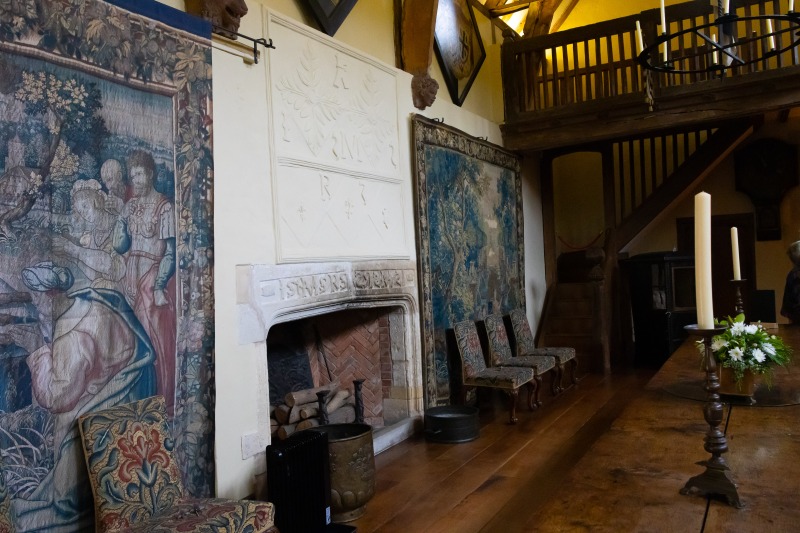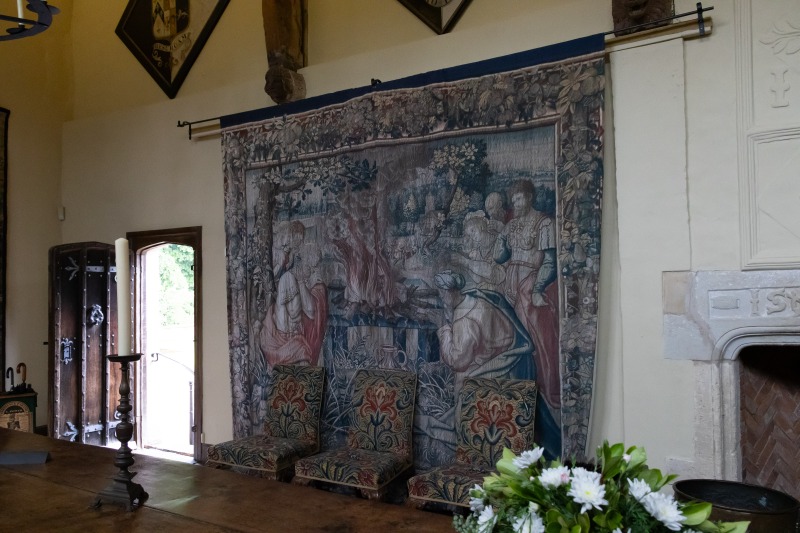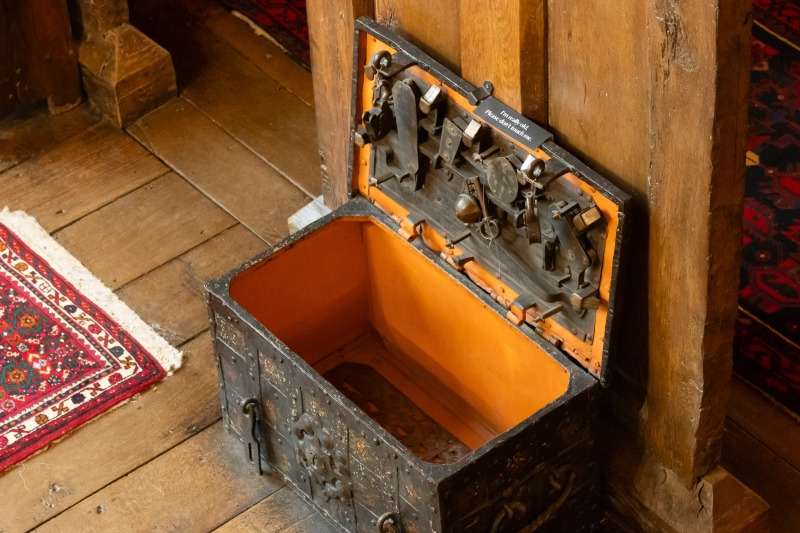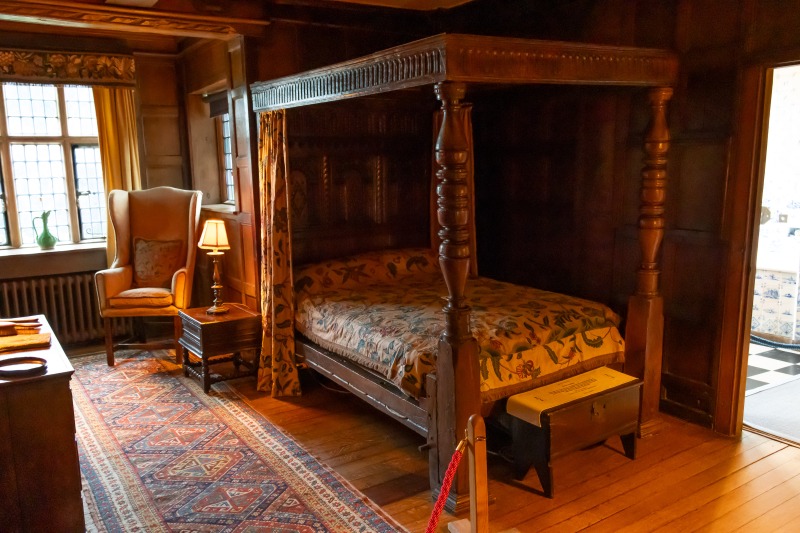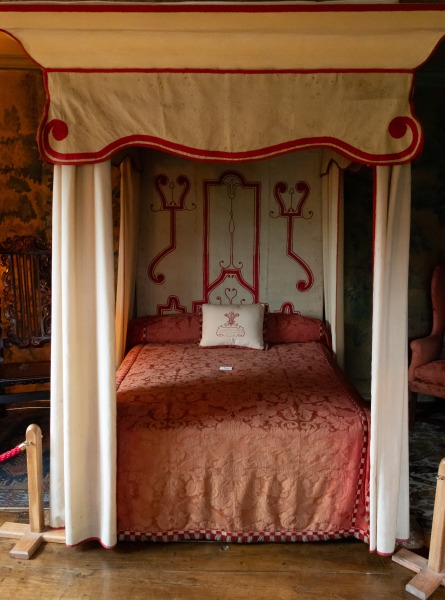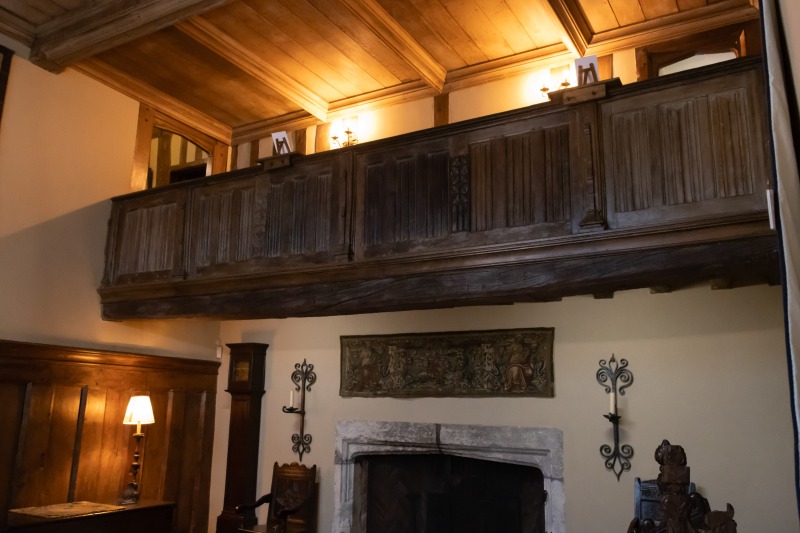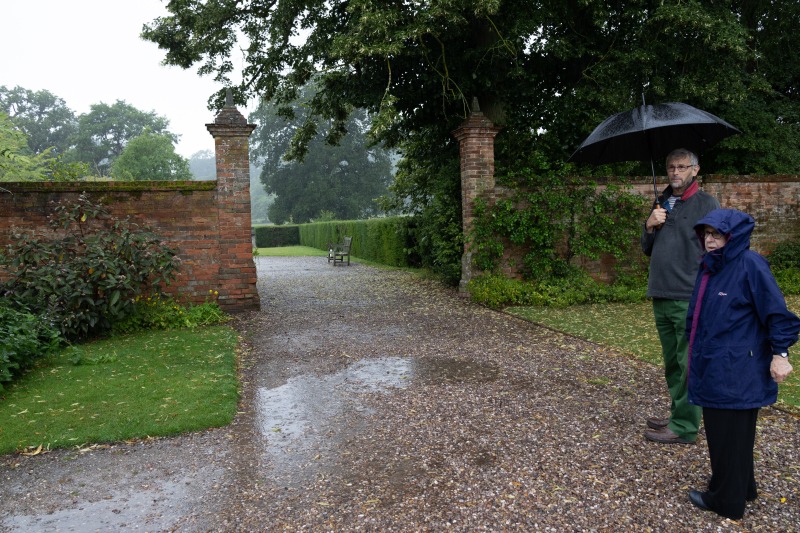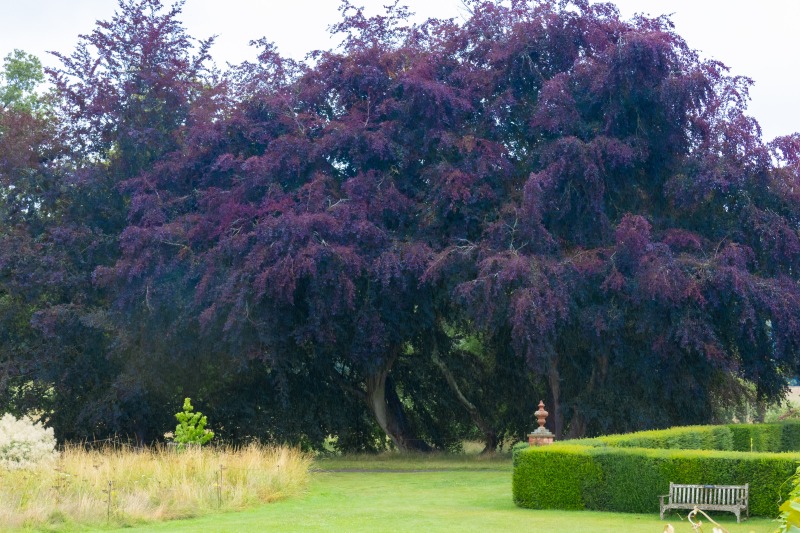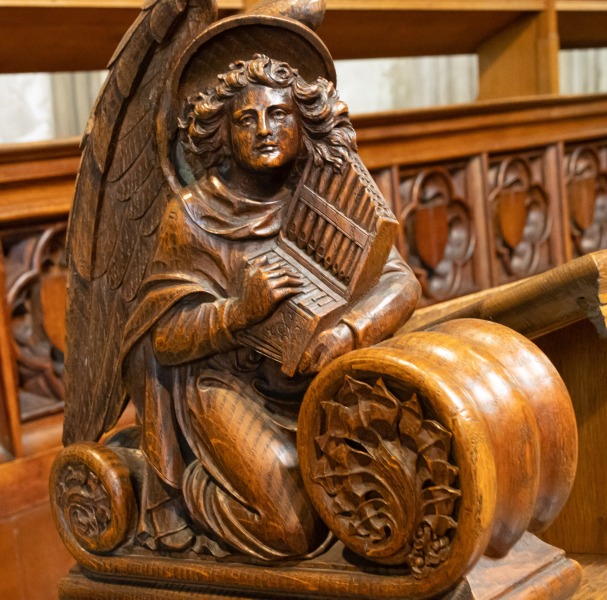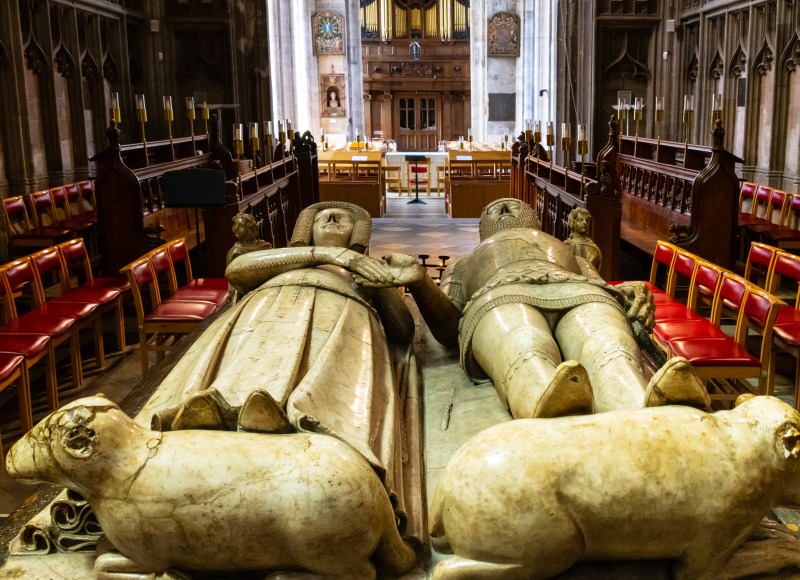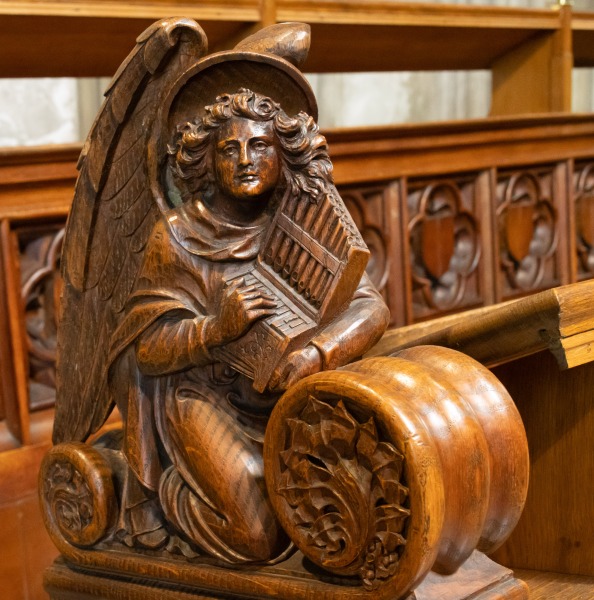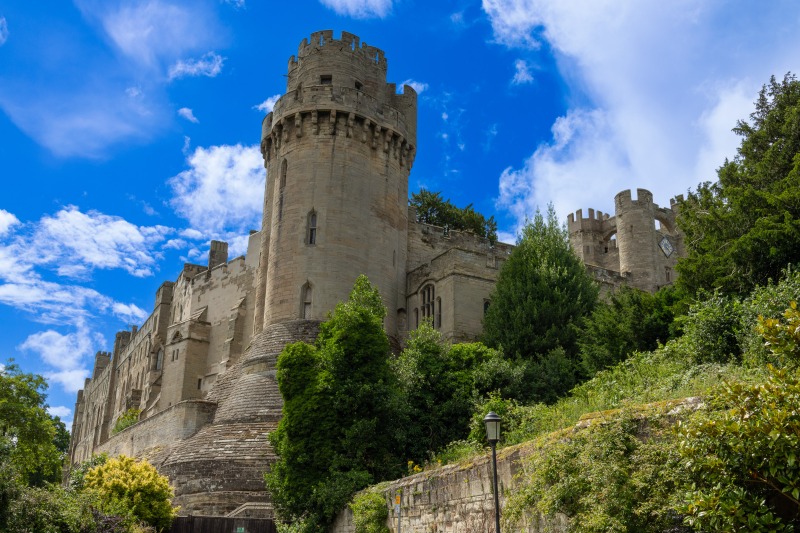Packwood House and Warwick
14th July 2023
We met up with friends (Bill, Viv, Norman and Valerie) at Packwood House. This was our first visit to this National Trust house. (But why? It is an easy drive from home for us.) The weather was atrocious with torrents of rain. We arrived early and went straight to the cafe. It was a genuinely nice National Trust one which opens at 9.am and was very well used. Many people were there seemingly just to meet up with friends.
Bill and Viv arrived, followed by Norman and Valerie. Having had hot drinks and yummy cakes, we headed out to the house where B&Vs daughter Jenny came to join us and introduce her baby son to us.
Packwood House is a Grade I listed Tudor manor house in Packwood on the Solihull border near Lapworth, Warwickshire. The NT has owned it since 1941. The house began as a modest timber-framed farmhouse constructed for John Fetherston between 1556 and 1560. The Fetherston family owned the house for more than 300 years, until the death of the last member of the family in 1876.
In 1904, the house was purchased at auction by Birmingham industrialist Alfred Ash. Alfred Ash was a bit of a character. He was known for his sharp wit and his love of practical jokes. One of his favourite hobbies was to play pranks on his guests. One of his favourite pranks involved the house’s very narrow, spiral staircase. Ash would often hide at the top and wait for his guests to come up. When they did, he would jump out very suddenly to scare them.
Alfred Ash’s son, Graham Baron Ash, inherited the house in 1925. Graham Baron Ash was also a bit of a character. He was a philanthropist and conservationist. Like his father, he had a good sense of humour.
He decided to restore Packwood House to its former glory, so he spent the next two decades buying antiques, of the correct era, reclaimed salvage. and appropriate artwork. He had the house decorated in a traditional Tudor style. He also worked on the gardens, having them restored and adding a number of new features, including a yew garden and a lake.
Graham Baron Ash was a generous man, and he decided to leave Packwood House to the National Trust in memory of his parents. In his ‘Memorandum of wishes’, Baron Ash stated that all furniture should be kept in the same position, that no extra furnishings should be added, and that freshly cut flowers should be placed in every room. The National Trust has been careful to preserve the house and gardens in their original state. And we duly noted the many vases of cut flowers.
Here are some funny facts about Packwood House:
- The house has a secret passage that leads from the library to the chapel.
- The yew garden is home to a number of topiary shapes, including a dog, a rabbit, and a sheep.
- The house is said to be haunted by the ghost of a former housekeeper.
Unfortunately, not all the rooms in the house were open; some of the downstairs rooms were closed due to being “rested”. There were an extraordinary number of longcase clocks. The National Trust room guides were very informative, and good humoured.
After touring the house, we walked out into the rain and visited the garden (complete with fantastic herbaceous borders), spending a significant amount of time in a summerhouse out of the rain. We did manage to view the topiary shapes, and cloud hedges,
We dried off in the cafe before heading off to Leamington Spa for an excellent supper and the night at Bill & Viv’s. We admired their recently refurbished sash windows and the evidence of Viv’s green fingers. After supper, we played a wooden memory game that V&N had recently discovered, Trickier than it first appeared.
The next day it was bright and sunny but with large rain clouds. At any moment it could be sunny, or it could pour. After a good, hearty breakfast We headed into Warwick on the bus, and after the mandatory visit to the charity shops, we headed to Saint Mary’s Church. Norman had worked here on an archaeological dig in 1975 after leaving Cambridge. This beautiful church is full of history & interesting features after standing for 900 years. The Norman crypt is the oldest part of the church, dating back to the 12th century. It is a vaulted space with pillars and arches, and it is said to be haunted by the ghost of a monk. There was part of a medieval ducking stool on display.
The church has three organs, of which two are operational and used at various recitals.
The Beauchamp Chapel is a magnificent example of 15th-century Gothic architecture. Built to house the tomb of Richard Beauchamp, the Earl of Warwick, it is said to be one of the most important tombs in England.
The church has connections with the armed forces, with old military flags on display. St Mary’s Church hosts regular services for military personnel and their families. These services are a way for people to come together to pray for those who are serving, and to remember those who have died in service.
Not so nice was a plaque to the memory of Enoch Powell. Apparently, Powell was a regular worshipper at the church. After his death in 1998, he was buried in the adjoining churchyard.
We ate lunch in a small cafe called the Thomas Oken. Oken was a wealthy Mercer who died in 1573 leaving his fortune ‘for the relief in need’ of Warwick residents. It was full inside, so we sat outside and ordered drinks and food. Then it started to rain. Thankfully, space became available inside. The weather soon improved, and we were able to continue our tour of Warwick in the dry,
Once we had finished, we walked down towards Warwick Castle and visited a small private garden called The Mill Garden. This was super special, quiet, secluded spot. It is a privately owned, half-acre informal cottage garden located on the banks of the River Avon. Julia Measures, is the current owner. Her family has owned the gardens since 1938. Her father Arthur worked on it for 60 years.
We headed back to Leamington Spa on the bus, and then, after a restorative cup of tea & biscuit at B&V’s, we drove home
